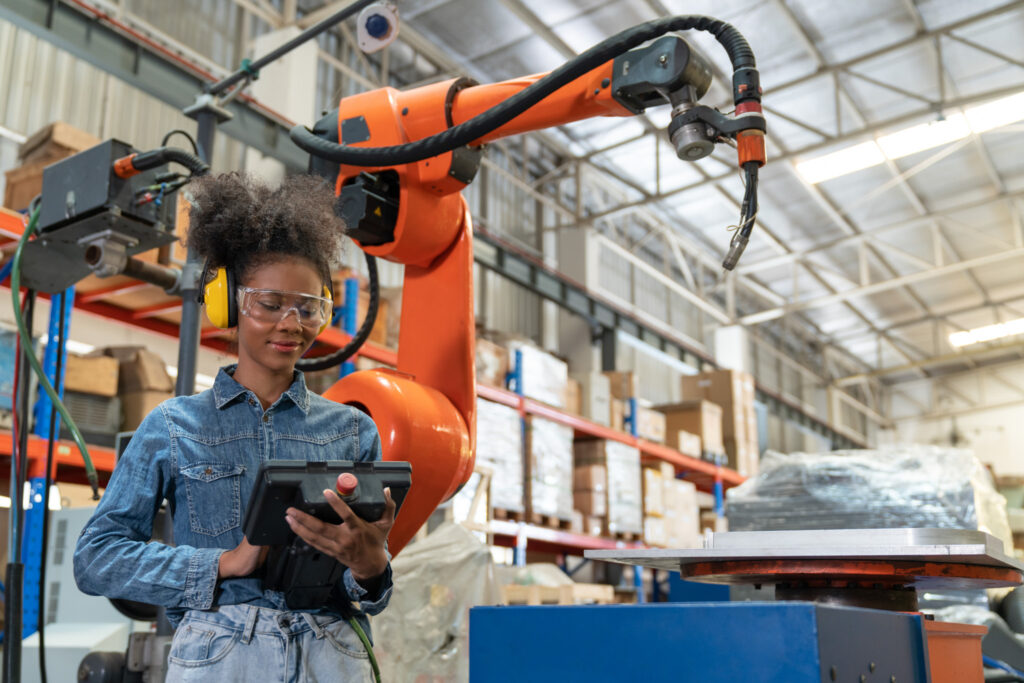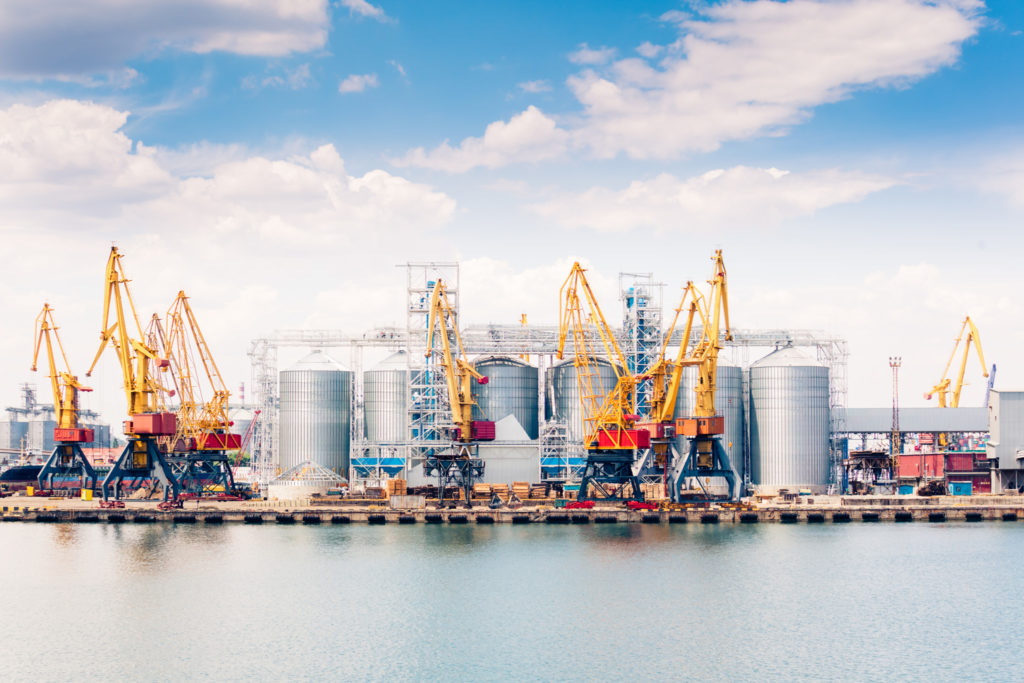Generative artificial intelligence has dominated headlines and workplaces globally for creative and productive purposes. You probably already know that marketing teams, independent contractors, and business management sectors use this technology to increase productivity and streamline operations.
However, the possibilities don’t end there as generative AI in logistics becomes increasingly prominent in Canadian businesses. Our team at Encore Deliveries guides you through the basics, how to use AI in logistics, and what you should consider before implementing relevant solutions.
What Is Generative AI?
Generative artificial intelligence is more than a trending tech topic and application used by people with modern devices. It explores previous or existing information, learns about the patterns within that data, and uses what it finds to produce new content or information. In other words, the technology generates data about a prompt by looking at the data’s historical predecessors.
You and other Canadian business owners might apply AI solutions to improve internal business processes. Many forums exist to discuss its creative uses for media like videos, copy, and images. However, shipping and manufacturing companies increasingly apply AI use cases in logistics to improve how they ship, receive, and produce products.
Does Generative Artificial Intelligence Have a Place in Logistics?
AI has an increasingly important role to play in logistics. Its application methods have grown significantly over the past few years. By integrating into your navigational strategies, you could:
- Predict the outcome of new scenarios, like supply chain shortages or significant roadblocks.
- Map out better delivery routes.
- Determine whether your target consumers will demand specific products, allowing you to adjust your inventory through demand forecasting.
Canadian companies have an edge over the rest of the globe. Precedence Research states that North America has a sizable edge, having the largest global market share of generative artificial intelligence industries in 2022. You could give your company a leading place in the logistics industry by integrating the technology as soon as possible.
Integrating AI in Logistics and Supply Chain
What role could AI play in logistics and supply chain sectors? It goes beyond the potential development of autonomous vehicles, drones, and similar equipment. AI will not likely replace people who drive, verify information, program, and communicate.
However, more companies will increasingly integrate it into their shipping, delivery, and inventory management techniques. You will find examples of its applications below.
Risk Management
The logistics industry has numerous risks that make meeting goals and consistent productivity touch and go. Changing weather patterns, geopolitical events, and your target audience’s responses to marketing shift daily. Using artificial intelligence might help you navigate those challenges more seamlessly.
Supply Sourcing
If you produce an in-demand product, you need quality materials at fair prices to manufacture it and keep inventory levels steady. Otherwise, you could lose customers to your competition. AI in logistics can help you identify steady resource supplies or suppliers who sell materials at lower costs.
Contract Analysis
Contracts are fraught with legal and technical terminology. Such language might vary depending on the company, country, and municipality. Translating these documents consumes time and eats into your productivity.
Artificial intelligence applications can scan, process, and review the copy to keep you informed. It can also identify errors, obligations, and clauses that may create internal conflicts.
Managing Inventory and Routes
Speedy navigation is essential to successful logistics companies. However, unpredictable events, like mandatory detours, traffic accidents, and container spills, can significantly slow your fleet’s progress. Generative AI can scan for upcoming issues, alert drivers and operators, and identify new inventory transport routes.
How Would AI in Logistics Work in Practice?
How might you use logistical AI for your company? You can apply it to almost every stage of progress and productive aspect. Below, you’ll discover how AI in logistics might work in real-life scenarios.
Predicting Weather and Other Travel Concerns
The most common pain points shipping and receiving companies face are travel obstacles. In the past, drivers who happened upon an obstruction had to figure out how to get around without help. More recently, they might use GPS navigators for some assistance.
However, GPS still has some limitations. If you are too close to a fresh detour but can’t see it yet, your navigator may fail to warn you. AI in the supply chain and logistics sectors updates faster and adjusts pathways in real-time.
Designing Industrial Spaces
Building a factory or shipping and receiving facility from the ground up means growth and progress. However, it also means designing it to suit your staff’s needs.
You can use artificial intelligence to craft architectural blueprint drafts for the most conducive layout. Additionally, AI can help you determine a better floor plan for an existing warehouse or factory by imaging the current floor plan and sharing a fresh design with explanations for improvement.
Planning Maintenance
All industrial facilities need occasional maintenance to ensure the equipment runs smoothly and safely. Otherwise, your facility could go offline or shut down because of impromptu issues.
Generative machine learning can gauge your equipment status, letting you know well in advance about upcoming maintenance requirements. Then, you can create a plan that minimizes downtime.
Choosing Speedy Routes
Canadian road networks are extensive, complex, and intricate. Multiple routes might lead to the same destination, but which works best for today’s traffic and weather patterns? Leave the guesswork to your AI program.
What Should Companies Consider Before Using AI in Transportation and Logistics?
Machine learning programs come with numerous tempting advantages. However, you should carefully consider potential risk factors before implementing an AI solution. A Statista article explores some potential challenges of using AI throughout the logistics industry:
- Cybercrime increases that coincide with increased technological applications
- Overusing AI to replace human interaction and discernment
- Hardware breakdowns or coding problems that negatively impact productivity and shipping schedules
Contact Encore Deliveries for Innovative Delivery Solutions
A robust security plan combined with capable, tech-savvy teams can help you overcome the challenges caused by AI in logistics. Encore Deliveries keeps you updated about the latest navigational and supply technology advances. You can also contact us to improve your company’s approach to its logistical processes.
Frequently Asked Questions:
1: How can AI improve logistics and supply chains?
- AI can be used for risk management, finding suppliers, analyzing contracts, managing inventory, and optimizing routes.
2: Can you give a real-world example of AI helping with logistics?
- AI can predict weather patterns and road disruptions, allowing drivers to adapt routes in real-time for faster deliveries.
3: What challenges come with using AI in logistics?
- Concerns include potential cybersecurity risks, over-reliance on AI, and hardware/software malfunctions.
4: Does generative AI aim to replace human workers in logistics?
- No, AI is designed to augment human capabilities, providing valuable insights and support for decision-making.



 Who We Are
Who We Are
 Our Advantages
Our Advantages
 Case Study
Case Study





